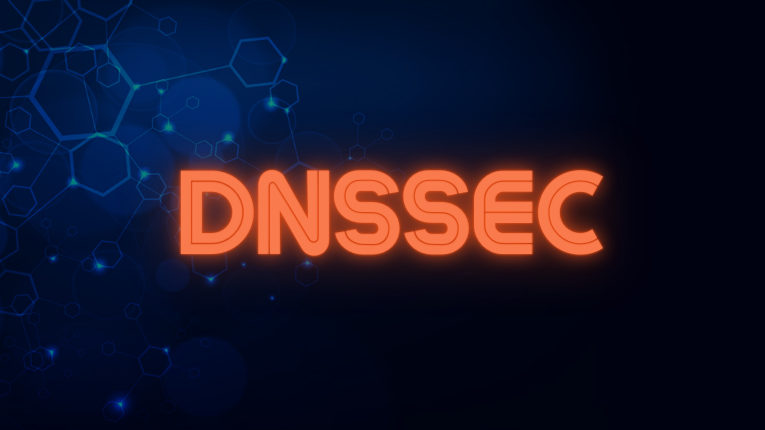What is DNSSEC? How does today's leading security technology work?
 What is DNSSEC? How does today's leading security technology work? Picture 1
What is DNSSEC? How does today's leading security technology work? Picture 1
DNSSEC (Domain Name System Security Extensions) is a set of extension protocols for the domain name system (DNS), aimed at enhancing security. DNSSEC provides security measures against attacks such as DNS information spoofing and minimizing the risk of denial of service (DDoS) attacks. So what is DNSSEC? Let's find out with TipsMake through the article below.
When was DNSSEC born?
DNSSEC was developed in the late 1990s by the Internet Engineering Task Force (IETF) to address the growing security vulnerabilities of the DNS system. In 2005, DNSSEC was officially published as an RFC standard by IETF.
DNSSEC relies on public key encryption (PKI) to enhance the security of the DNS system by digitally signing records. This helps authenticate and maintain the integrity of the association between domain names and IP addresses, and detect unauthorized changes. Since being published as an RFC standard in 2005, DNSSEC has been widely adopted on the Internet.
 What is DNSSEC? How does today's leading security technology work? Picture 2
What is DNSSEC? How does today's leading security technology work? Picture 2
When was DNSSEC born?
How does DNSSEC work?
DNSSEC works by using cryptographic key pairs to sign and authenticate DNS records. This process involves the following steps:
- Digital Signatures: DNSSEC uses digital signatures to authenticate DNS records. Each domain name will have a pair of public and private keys. The public key is stored on the DNS server, while the private key is kept by the domain administrator.
- Record authentication: When a browser requests information from a domain name, the DNS server returns that information along with a digital signature. The browser then uses the public key to authenticate this signature, ensuring that the information received is correct and has not been altered.
- DNSSEC Records: DNSSEC adds new records to the DNS system, including; Public key records, resource signature records, existence authentication of records,.
By using digital signatures, DNSSEC helps prevent attacks like DNS spoofing, where an attacker can change DNS data to redirect users to malicious websites. It also protects privacy and ensures that information received from a DNS server is from a trusted source.
How is DNSSEC different from regular DNS?
Features:
- DNSSEC: Provides features such as data authentication, integrity assurance, and authentication, helping to make the DNS system more secure.
- Regular DNS: Only resolves domain names without additional security mechanisms.
Mechanism of action:
- DNSSEC: Uses cryptographic key pairs to sign and authenticate DNS records, including record signing, public key publication, and record authentication steps.
- Regular DNS: Domain name resolution based on DNS records without digital signature authentication.
Intended use:
- DNSSEC: Provides authentication and integrity assurance of DNS data, to protect the system from attacks such as DNS spoofing and data falsification.
- Regular DNS: Mainly for resolving domain names without focusing on data security during transmission.
Details of the new DNSSEC records
To better understand DNSSEC, we need to understand the new records that the technology uses. Here are the details of these records:
RRSIG
RRSIG (Resource Record Signature) is a type of DNSSEC record used to store important information and data for authenticating the accompanying resource records. When a DNS server receives DNS records, it will use RRSIG to check whether these records are authentic or not, thereby ensuring that the data has not been tampered with or changed.
DNSKEY
DNSKEY is a record containing the public key used to authenticate RRSIG signatures. When a DNS record is signed with a private key, the corresponding public key is stored in the DNSKEY record so that DNS resolvers can use it to authenticate the signature. This record is an essential part of building the chain of trust for DNS records in the system.
DS
DS (Delegation Signer) is a record used to associate a subdomain with its public key at a higher level in the DNS system. The DS record helps ensure the integrity of the authentication chain from the root domain to the subdomain, helping to maintain the chain of trust between zones in the DNS system.
NSEC
NSEC (Next Secure) is a record used to prove that a particular domain name does not exist in the DNS zone. It lists valid domain names consecutively, helping to prevent attacks against non-existent domain names.
NSEC3
NSEC3 is an improved version of NSEC that uses a hash function to enumerate valid domain names. This improves security by preventing the disclosure of domain names that do not exist in the DNS zone.
NSEC3PARAM
The NSEC3PARAM record contains configuration parameters for the use of NSEC3 records, which determine how NSEC3 records will be used in DNSSEC responses for non-existent domain names.
DNSSEC and DDoS Attacks
While DNSSEC offers many security benefits over DNS, it can also be the target of Distributed Denial of Service (DDoS) attacks. These attacks can overload DNS servers by sending large numbers of DNSSEC queries, causing a denial of service.
See more: Professional DDoS attack prevention solution for Website
What are the major benefits of using DNSSEC?
 What is DNSSEC? How does today's leading security technology work? Picture 3
What is DNSSEC? How does today's leading security technology work? Picture 3
What are the major benefits of using DNSSEC?
For business
- Protecting your brand and reputation: DNSSEC creates trust for customers when accessing your services. Consumers can rest assured that the information they receive is accurate and from a trusted source.
- Ensure online transaction security: With the use of DNSSEC, online transactions will be more secure, minimizing the risk of personal information and bank account theft. This is especially important for businesses operating in the fields of e-commerce and financial services.
- Increased customer confidence: When businesses use DNSSEC, customers feel more secure when accessing the business's online services. This helps increase customer trust and satisfaction.
- Improved user experience: By ensuring that DNS queries are not altered, end users will receive the correct IP address, thereby improving the online browsing and transaction experience.
For ISP
- Improved service quality: ISPs can improve service quality and customer satisfaction, as users will be better protected from online threats
- Minimize the risk of DDoS attacks: DNSSEC helps prevent DNS spoofing attacks, minimizes the risk of distributed denial of service (DDoS) attacks, and helps maintain the stability of the DNS system.
- Improved reputation and competitiveness: Implementing DNSSEC helps ISPs improve their reputation with customers and create a competitive advantage over providers that do not provide this service. Customers will prefer ISPs that provide higher security services.
- Support for new technology development: ISPs using DNSSEC can easily integrate and support new security technologies, helping to keep the DNS system up to date and best protected.
DNSSEC authentication process step by step
Step 1: Generate signing key
The first step in the DNSSEC authentication process is to sign DNS records with the domain owner's private key. Each DNS record is digitally signed, called a Resource Record Signature (RRSIG). This signature helps verify that the DNS records have not been altered or tampered with during transmission.
Step 2: Publish public key
Once DNS records are signed, the corresponding public key is published as a DNSKEY record. The DNSKEY record allows anyone to use it to validate RRSIG signatures.
Step 3: Create DS record
A DS (Delegation Signer) record helps associate a subdomain with its public key at a higher level in the DNS system.
Step 4: Deploy the signing key
Deploy signing keys and DNSSEC records on DNS servers.
Step 5: Check authentication
Use the parent domain's public key to authenticate the subdomain's DNSSEC records.
Conclude
DNSSEC is an important security technology that enhances the reliability and safety of the DNS system. By using digital signatures, DNSSEC ensures that DNS information transmitted has not been altered or tampered with. This helps protect users from cyber attacks and ensures safe, reliable web access.
You should read it
- ICANN successfully changed the DNSSEC KSK key to enhance the security of the domain server system
- Secure DNS connection with Windows Server 2008 R2 DNSSEC
- The system administrator (sysadmin) needs to update the software if he / she does not want to lose the network
- Can just chat Zalo just transfer money
- Why does SpaceX send the deadly virus to the International Space Station?
- Change the flat Facebook interface with Flatbook
- How are User Experience and Customer Experience different?
- Datally - Google's new app that saves mobile data
- The HP Slate 500 suddenly appeared on HP's website
- 7 signs of failure of the Internet 'preschool'
- Protect yourself by keeping your hardware safe
- Technology jokes: Present and future of hackers
May be interested

What is SSL Handshake Failed Error? How to detect and fix it effectively

What is CSRF? How it works and how to prevent attacks effectively

What is pfSense? Benefits and how to use it

What is SIEM? How it works and why it matters

What is ARP Spoofing? How to Detect and Prevent?

What is Wannacry? How to detect and prevent it effectively






 ICANN successfully changed the DNSSEC KSK key to enhance the security of the domain server system
ICANN successfully changed the DNSSEC KSK key to enhance the security of the domain server system Secure DNS connection with Windows Server 2008 R2 DNSSEC
Secure DNS connection with Windows Server 2008 R2 DNSSEC The 5G era is near, but are security procedures ready?
The 5G era is near, but are security procedures ready? Huawei will invest another $ 2 billion in network security in the future
Huawei will invest another $ 2 billion in network security in the future He is the world leader in AI training, the salary for AI-related work is also very high
He is the world leader in AI training, the salary for AI-related work is also very high AI Trainer - the profession of the future in the era of technology
AI Trainer - the profession of the future in the era of technology